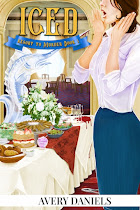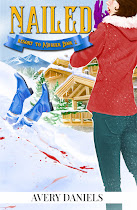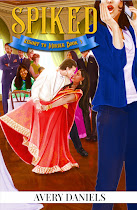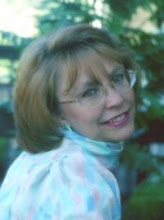I am tickled to have Laurie Cass, a fellow cat and mystery lover, join us on the blog. Laurie grew up in Michigan and graduated from Eastern Michigan University in the 80’s with a (mostly unused) Bachelor of Science degree in geology. She and her husband live on a lake in northwest lower Michigan. When Laurie isn’t writing, she’s working at her day job, reading, yanking weeds out of her garden, or doing some type of skiing.
Back when I started writing my very first manuscript, almost—short pause while I haul out my fingers and toes—18 years ago, my process was very different than it is today.
No, hang on. Let me qualify that. In some ways it’s very similar, because the first thing I did that made me feel like a bona fide writer was to write every day. I bought a package of spiral bound memo pads, the ones that are about 3 inches by 5 inches, numbered the lower right corner of each page with the day of the month, and made sure I filled that page every night before I went to bed.
Yeah, I know, that’s not much writing, and you’re right, it isn’t. But it got me into the habit of writing. And it turned out that what I wrote wasn’t as important as the act of writing every day. The contents of the memo pad have varied from scraps of dialogue to names that might turn into character names to a plot idea to things I don’t want to forget to do. Though most of it isn’t the least bit important, carrying that memo pad around, as silly as it sounds, was integral to my development as a writer.
At some point, I expanded from the memo pad habit to writing three pages a day in a 8.5” x 11” spiral notebook. (This was based on Julia Cameron’s Three Morning Pages; if you want to learn more, just Google it.) I spent almost a year scrawling down whatever came into my pointed little head before I felt confident enough to try my hand at writing a novel, and I’m as certain as I can be that it’s those hundreds of pages that developed my writing style.
I eventually summoned the courage to try writing a book, keeping at it three pages a day until the manuscript was completed. The finished product was crap, but at least it was done, and for about five minutes that was good enough. Then I turned the page and started my next manuscript. Five and a third manuscripts later, I was the proud signatory to a book contract and I now have ten published books under my belt with more to come.
So how is my process today both the same and different from what it was all those years ago? I’m still writing a set amount per day, only now my daily quota is a word count in the word processor instead of a number of lined pages. And instead of free-form stream of consciousness thoughts I’m (mostly) following an outline.
The same, yet different. Different, yet the same. Either way, I’m writing, and either way, I’m still enjoying myself immensely.
Note: For those of you who are wondering, to this day I carry both a memo pad and a notebook in my briefcase. The memo pad is used daily. I don’t write in the notebook every day, but it’s always there for me, and I find an odd comfort in knowing that it’s close to hand.
~ ~ ~ ~ ~ ~ ~ ~ ~ ~ ~
THANK You Ms. Cass. You can find out more about Ms. Cass at her website: http://catmystery.com





























